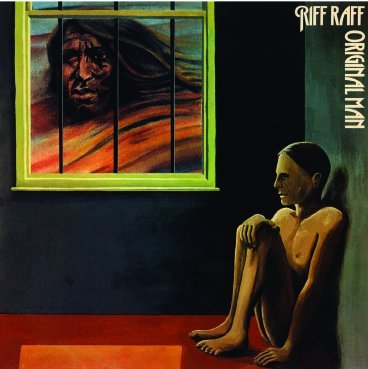![🇬🇧 Riff Raff – Original Man (1974) [Full Album] | British Classic Progressive Rock Gem](https://musicvoyager.net/wp-content/uploads/2025/05/600.webp)
Released in 1974, Original Man stands as the second and final studio album by British jazz-rock ensemble Riff Raff. This record showcases the band's evolution into a more refined and adventurous sound, blending jazz, rock, and progressive elements. With its intricate compositions and stellar musicianship, Original Man has garnered acclaim among progressive rock aficionados.
The Band's Evolution
Riff Raff was formed in 1972 by keyboardist Tommy Eyre, known for his work with Joe Cocker's Grease Band. After the Grease Band's dissolution, Eyre collaborated with bassist Roger Sutton, leading to the formation of Riff Raff. The band's lineup for Original Man included:
Tommy Eyre – keyboards, string synthesizer, vocals
Roger Sutton – bass, cello, vocals
Pete Kirtley – guitar, vocals
Aureo de Souza – drums, percussion
Guest musicians enriched the album's sound, featuring Bud Beadle on various saxophones, Steve Gregory on woodwinds, Joanna Newman on vocals, and Joe O'Donnell on viola.
Recording and Production
Original Man was recorded between April and May 1974 at Escape Studios in Egerton, Kent, and Olympic Studios in London. The band took a hands-on approach, handling writing, arranging, and production themselves. This autonomy allowed them to craft a sound that seamlessly blended their diverse musical influences.
Track-by-Track Analysis
1. “Original Man”
The title track sets the tone with a fusion of jazz improvisation and rock energy. Extended solos and dynamic shifts showcase the band's technical prowess.
An uptempo instrumental, “Havakak” features intricate rhythms and vibrant horn sections, highlighting the band's jazz influences.
3. “Goddamm the Man”
This track presents a funky-jazz groove with call-and-response interactions between guitar and horns. The lyrics reflect themes of individuality and resistance to conformity.
4. “In the Deep”
A shorter, more introspective piece, “In the Deep” offers a mellow atmosphere with subtle instrumentation and emotive vocals.
5. “The Waster”
Combining bluesy guitar riffs with jazz harmonies, “The Waster” delivers a soulful narrative on lost opportunities.
6. “Tom's Song”
A tribute to keyboardist Tommy Eyre, this track features melodic piano lines and a relaxed tempo, emphasizing the band's softer side.
7. “Speed”
Closing the album, “Speed” is an energetic composition with rapid tempos and complex arrangements, encapsulating the band's fusion ethos.
Musical Influences and Style
Riff Raff's sound on Original Man is a tapestry woven from various musical threads:
- Jazz Fusion: The album's improvisational elements and complex harmonies align with the jazz fusion movement of the early '70s.
- Progressive Rock: Extended compositions and thematic development reflect the influence of progressive rock contemporaries.
- Funk and Soul: Groove-oriented tracks like “Goddamm the Man” showcase the band's appreciation for funk and soul rhythms.
Reception and Legacy
While Original Man did not achieve significant commercial success upon release, it has since been recognized as a standout example of jazz-rock fusion. Critics and fans have praised its sophisticated arrangements and the band's cohesive performance. The album holds a rating of 4.09 out of 5 on ProgArchives, indicating its enduring appeal among progressive music enthusiasts.
Behind the Scenes and Trivia
The band's name, Riff Raff, was chosen with a sense of humor, emphasizing their individuality and diverse backgrounds.
Drummer Aureo de Souza hailed from Rio de Janeiro, bringing a unique rhythmic perspective to the group's sound.
The album's artwork was created by Dick Whitbread, complementing the music's eclectic nature.
Recommended Listening Context
Original Man is ideal for listeners who appreciate the fusion of jazz improvisation with rock structures. Fans of bands like Colosseum, Soft Machine, and early King Crimson will find much to enjoy. The album's intricate compositions reward attentive listening, making it suitable for dedicated music sessions.
Connection to Other Albums
Original Man follows Riff Raff's self-titled debut album released in 1973, which leaned more towards pop and blues influences. The band's evolution is evident in the more complex and jazz-oriented compositions of their second release. For a comprehensive understanding of Riff Raff's musical journey, exploring both albums is recommended.
Conclusion
Pros:
- Masterful blend of jazz and rock elements
- Exceptional musicianship and cohesive band dynamics
- Thoughtful compositions with emotional depth
Cons:
- Limited commercial exposure may make the album less accessible to casual listeners
- Some tracks may require multiple listens to fully appreciate their complexity
Artist Biography
For more information on Riff Raff's history and discography, refer to the Riff Raff Artist Biography.
🎧 Listen now on your favorite platform!












